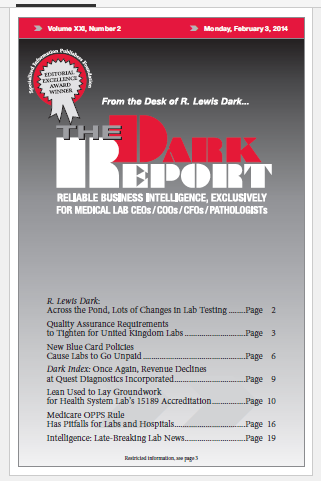CEO SUMMARY: In the United Kingdom, a window of opportunity has opened for improving the quality assurance activities of pathology and histopathology laboratories. Last week, at the Frontiers in Laboratory Medicine conference, the newly-published “Pathology Quality Assurance Review” was the focus of several keynote sessions. One recommendation is to develop key assurance indicators (KAIs) that …
Quality Assurance Regs to Tighten for UK Labs Read More »
To access this post, you must purchase The Dark Report.


